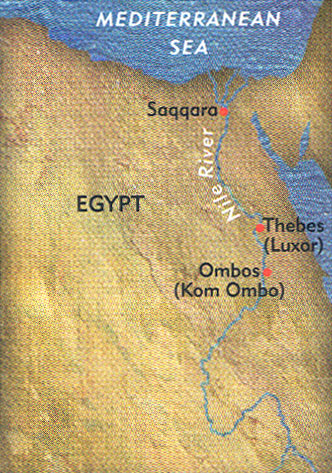Past Perfect: An Artist in an Antique Land
Francis Frith’s 19th-century photographs of Egypt inspired armchair travelers throughout the west
044

When Englishman Francis Frith (1822–1898) set off for Egypt in 1856, he packed three cameras, intending to capture the essence of the land and its people. Though photography in Frith’s day was a cumbersome, complicated process, it was also excitingly novel. The invention of photography in 1839 coincided with a significant increase in European travel to Egypt. Lithographs, paintings and florid travel accounts from the period portrayed Egypt as a romantic land of the senses. The boatloads of plundered antiquities that flooded the museums of Europe’s capitals also helped convey the romance of the Orient. (In 1818, a colossal head of Ramesses II made its way from Thebes to the British Museum, where it inspired Percy Shelley’s paean to the romantic East, “Ozymandias.”) Frith’s images of crocodiles, costumed natives, towering pyramids and ruined temples were delicious morsels of exotica eagerly consumed by the Victorian middle classes. No less colorful was Frith’s commentary on what he saw, published in his book Egypt and Palestine Photographed and Described by Francis Frith (1858–1860); the quotes that follow come from Frith’s book. Using a viscous solution called collodion, Frith printed his photographs from glass plates—a technique that produced clear, detailed, grain-free images. A retired entrepreneur who had made a killing in the Greek raisin industry, Frith was well aware of the advantages of mass production, and by 1860 his collection of prints ran into the thousands. He thus provided a unique opportunity to much of the British public: to experience the exotic East without having to leave the comforts of the West.
045

“In some instances, noble masses of picturesque ruin have been blown to pieces, and removed without any idea of uncovering objects of interest, but simply to clear space The hands employed are generally children, who are pressed from the adjoining villages. They carry out the dust in baskets upon their heads, and their movements are continually accelerated by ’taskmasters’ armed with corbashes, or whips of hippopotamus hide, which are capable of inflicting a terrible stroke.”
046

“I believe there is not now known to exist in Egypt a single statue or sphinx of movable proportions which is in any tolerable state of preservation Hundreds of these beautiful sculptures now enrich the museums and private collections of all Europe, but only the intelligent Egyptian traveler can fully appreciate their loss to Egypt. Methinks it were better that a few men who will be at the pains of seeking them in their legitimate places should enjoy them as they can only there be enjoyed, rather than that the hordes of careless people who throng the British Museum even should smile thoughtlessly at their incongruous quaintness, and in England, their unintelligible grandeur.”
047

“On the right shoulder of the colossus is the prenomen of Ramesses II. On the head may be seen the barbarous inscriptions of modern travelers—instances of a mania as reprehensible as it is childish. It is to be hoped that the best-known names will be collected and published, in order that the consequent disgrace may deter others from earning the same notoriety.”
048

“The accumulated sands of ages have buried this once magnificent pile to the capitals of the columns, and its stunted height strikes you as strangely disproportionate to the vastness of its other dimensions, and the immense size of the stones. It reminds you of some grand old giant buried to the shoulders—not dead yet, but overpowered and imprisoned by some potent spell—majestic in his helplessness.”
049

“The dazzling sunlight the undulations of shifting sand, with here and there a mummy-pit, into which an unwary passer-by may easily fall, bring back to the mind every characteristic of this striking view. The lesser features are not wanting to render it complete: there, in the foreground, is a human skull, and a little beyond it the skull of a sacred bull. It is unusual chance that brings them here: throughout the whole vast Necropolis the bones of men and of bulls and ibises are strewn around the mouths of the desecrated pits.”
When Englishman Francis Frith (1822–1898) set off for Egypt in 1856, he packed three cameras, intending to capture the essence of the land and its people. Though photography in Frith’s day was a cumbersome, complicated process, it was also excitingly novel. The invention of photography in 1839 coincided with a significant increase in European travel to Egypt. Lithographs, paintings and florid travel accounts from the period portrayed Egypt as a romantic land of the senses. The boatloads of plundered antiquities that flooded the museums of Europe’s capitals also helped convey the romance of the Orient. (In 1818, a colossal […]
You have already read your free article for this month. Please join the BAS Library or become an All Access member of BAS to gain full access to this article and so much more.
